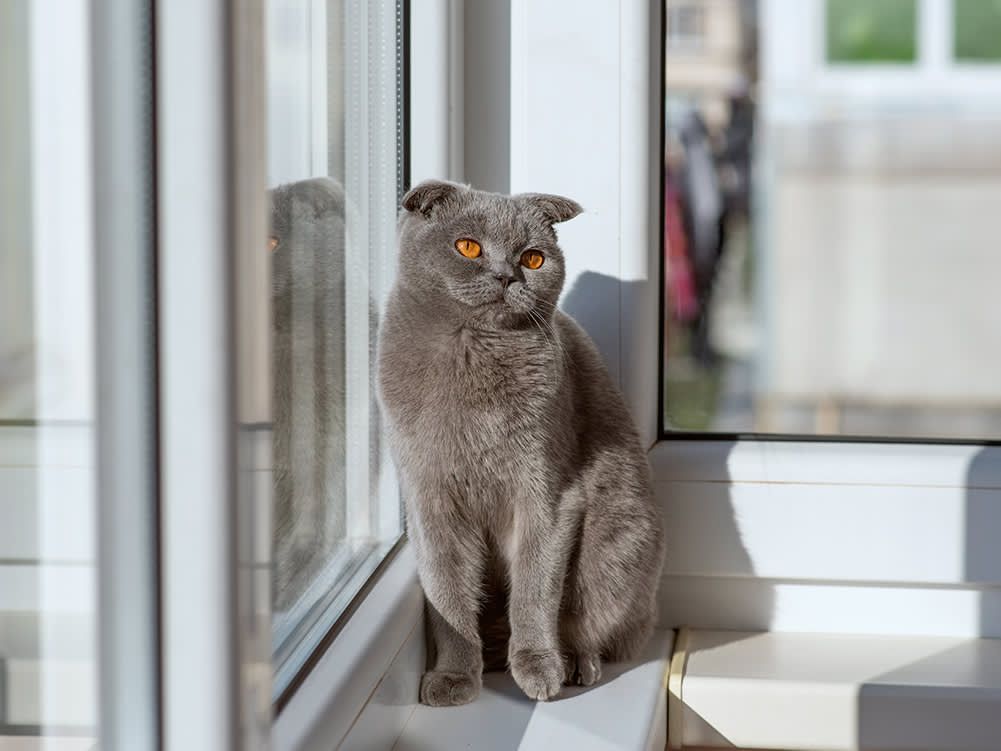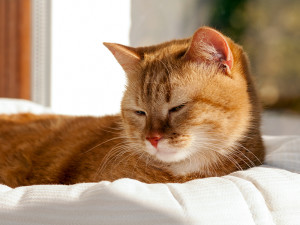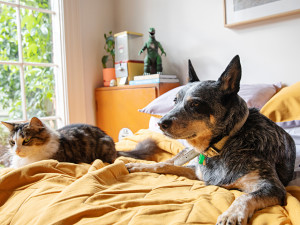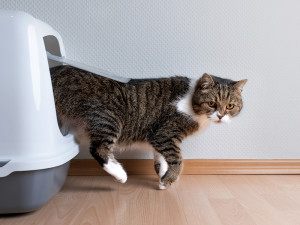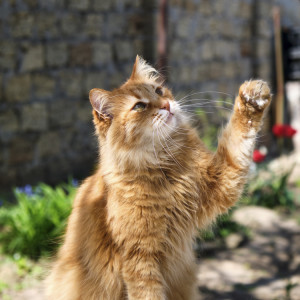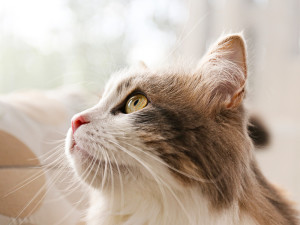Should Your Cat Go to the ER?
Here are six good reasons to haul tail to the emergency room.
Cats: They can be weird. This makes it extra difficult to know when something is up with them — but it doesn’t make it any less important to figure out what’s wrong in a timely manner. When your pet is sick, getting them to the ER quickly can be a life-or-death situation. That’s why it’s important to get familiar with the basics of first aid and learn about what is an actual emergency, so you aren’t scrambling to figure it all out in a high-pressure situation.
What to do in an emergency
The first step, though nearly impossible, is to remain calm. Nothing productive has come from adding tension to any already stressful environment. Next, contact your veterinarian, describe the situation, and follow their instructions. If they recommend an emergency visit, ensure you’re safely transporting your cat as you rush to the hospital. In the case of an injury, try to keep your cat’s movement to a minimum. Placing them in a cardboard box or in a carrier that opens from the top will likely be the best way to prevent further injury.
Save on the litter with color-changing tech that helps you better care for your cat.
While you may be struggling to remain calm, there’s a strong possibility that your cat (whether they’re injured or in pain) is feeling just as distressed. Although most panicked animals respond well to a soothing voice, the stress of an emergency can cause an otherwise friendly animal to act aggressively. If you’re worried that your cat may lash out and injure themselves or another person, try gently wrapping them in a blanket or towel, being cautious not to put pressure on any pain points.
Unfortunately, the nature of emergencies is that they’re unexpected and sometimes they take place on the weekend or late at night when your local animal hospital is closed. While you should always have the number for your closest 24-hour pet emergency hospital handy, sometimes it’s comforting to speak with a doctor you’re familiar with. In the event that you’re unable to consult your regular veterinarian, there are signs of serious medical conditions that you should look for. Prepare yourself by reading over these six reasons to rush to the emergency room.
1. Straining to urinate
Most cats will gamely demonstrate that they’re having problems peeing by making frequent trips to the litter box, squatting to pee outside the box, or vocalizing while they try to go. These signs can be because of a urinary tract infection (UTI) sterile bladder inflammation, bladder stones, or a urinary obstruction — and the ER can provide much-needed relief. If your cat is completely unable to urinate, that’s a genuine emergency. (It basically means the body can’t get rid of waste products.) Urinary obstructions often develop because of urinary crystals, mucus plugs, bladder stones, or a combination of these conditions. This can lead to bladder pain, kidney damage, and serious electrolyte abnormalities. Urinary obstructions can quickly become life-threatening without treatment — so don’t waste time second-guessing a trip to the ER.
2. Constant vomiting
Don’t confuse this with that thing where your cat revenge-pukes on the book you’ve been reading. When your cat vomits on your book, then the floor, then the bed...that’s when it’s time to go to the vet. If your cat keeps throwing up, it may be a sign of a gastrointestinal obstruction, organ dysfunction, or dietary indiscretion — and blood work or radiographs can determine if your cat needs medical management for GI upset or even surgery. There’s a lot of fluid loss associated with vomiting, and your cat can quickly become dehydrated if the vomiting is left untreated, so some form of fluid therapy is usually needed. Timing is everything.
3. Abnormal breathing
While it’s normal for dogs to pant when they’re hot, excited, or exercising, cats prefer to keep their breathing under control. Labored breathing can develop from inflamed airways, infection, or fluid accumulation in or around the lungs. Changes in breathing may be subtle — your cat may stretch their neck forward to try to get more air or display exaggerated movement of their chest or abdomen with each breath. Cats with respiratory disease can go from unwell to unstable quickly, so get your kitty to the vet if there are any changes in their breathing.
4. Trauma
If your cat gets hit by a car, gets into a scuffle with another animal, or has an otherwise traumatic accident, they should be evaluated by a vet. Professional wound care and antibiotics prevent bites and other injuries from developing nasty infections. Internal bleeding and lung injuries may be hard to spot right away since cats are experts at hiding the extent of their discomfort. It’s better to be safe and have your cat examined so that you don’t have to worry about what you’re not able to see.
5. Bumping into things
This isn’t about your cat’s desire to ram into your ankles as soon as you walk through the door. This is more about a sudden difficulty in getting to the litter box or food bowl without knocking into things en route. If your cat was cruising smoothly yesterday and seems discombobulated today, get them to the vet. They could be experiencing sudden blindness because of hypertension, infection, glaucoma, and degenerative disease. Severe hypertension can lead to detached retinas (the part of the eye that receives light). It can also damage the kidneys, heart, and brain if left unchecked. Not. Good. No matter the cause of vision loss, early diagnosis and treatment are vital for your cat to regain their sight.
6. Your cat is being weird (in a concerning way)
You know the particular ways in which your cat can be a total weirdo, so if you’re seeing something new, you’re right to be concerned. Maybe your chowhound (er, chowkitty?) is refusing food. Maybe your turbo cat doesn’t want to get out of bed. Sudden weakness, hiding, and/or constant vocalization aren’t normal. It’s never a bad idea to contact your vet (or the ER after hours) for advice if you feel something is off. They can provide guidance on whether you should come in right away or wait to see your primary care vet when they’re available.
